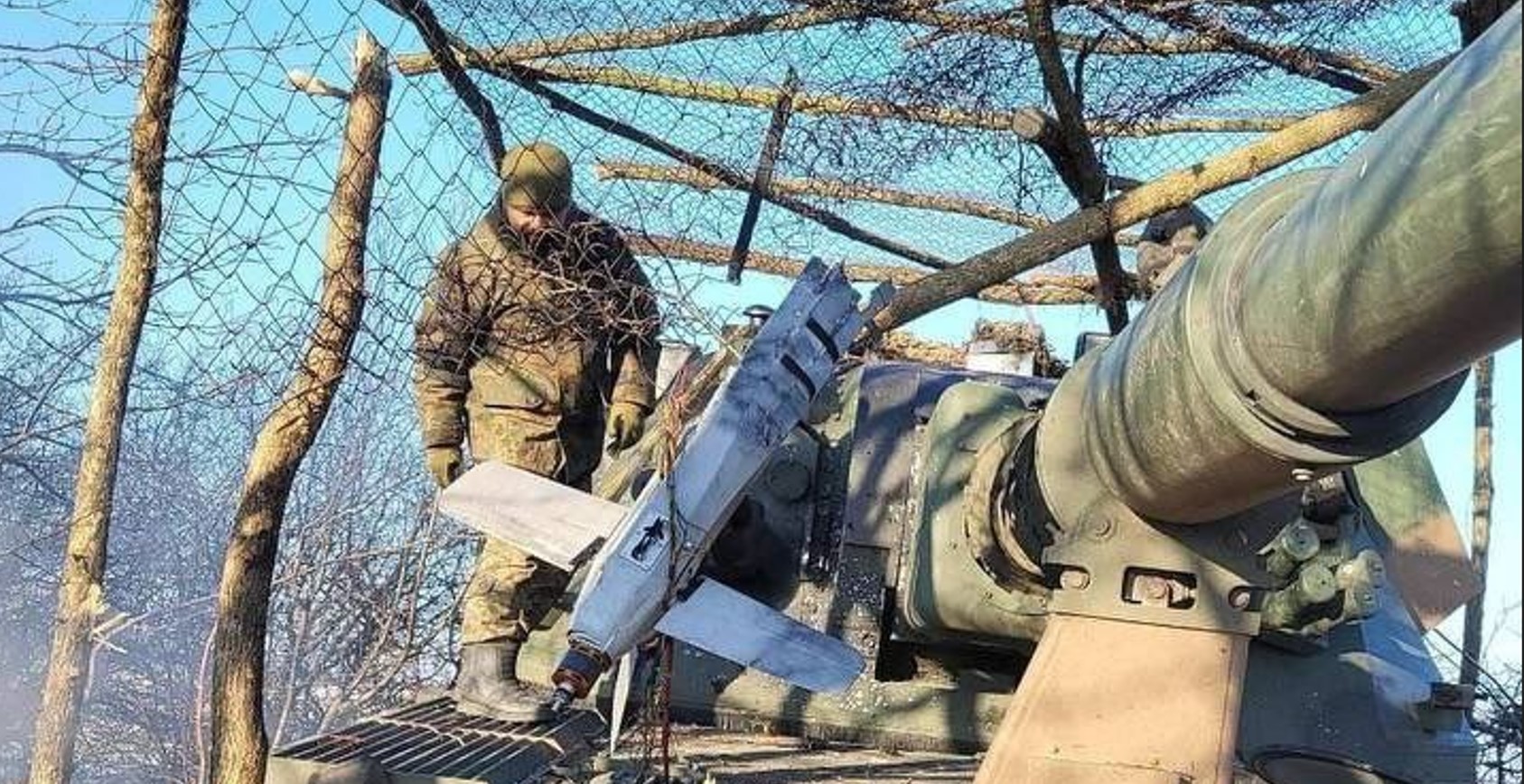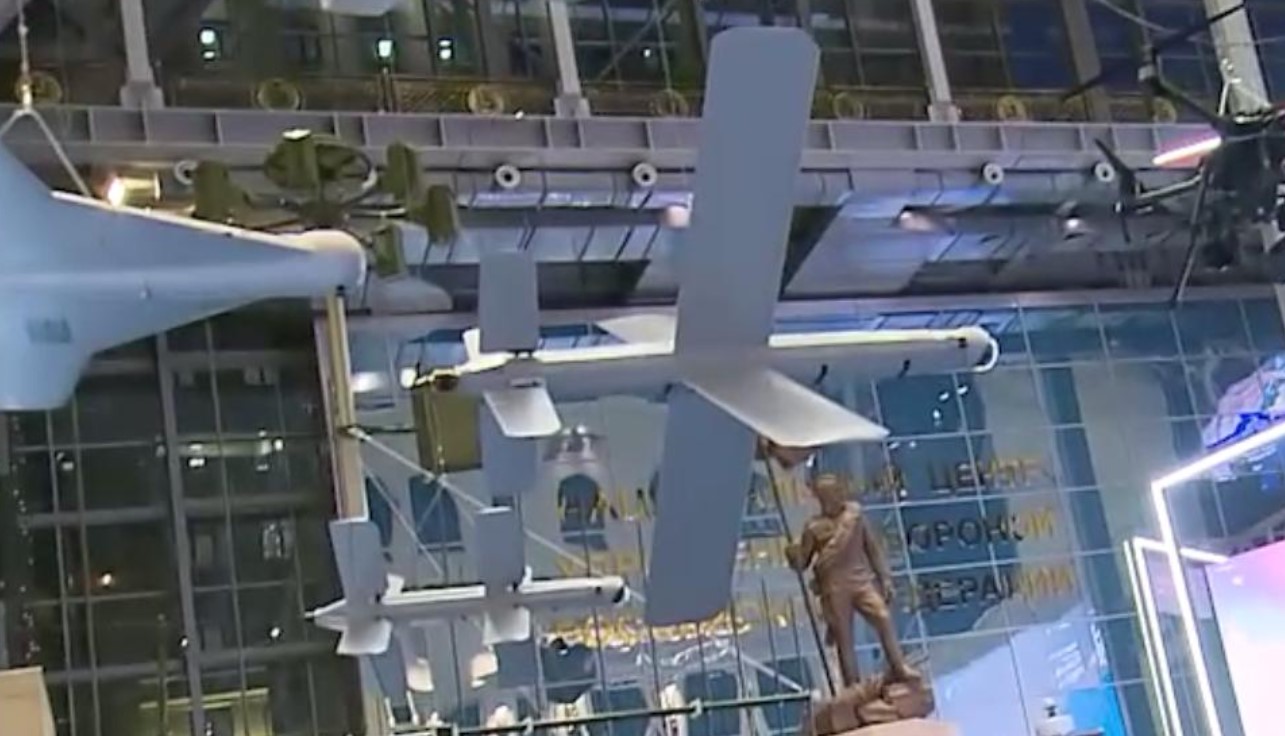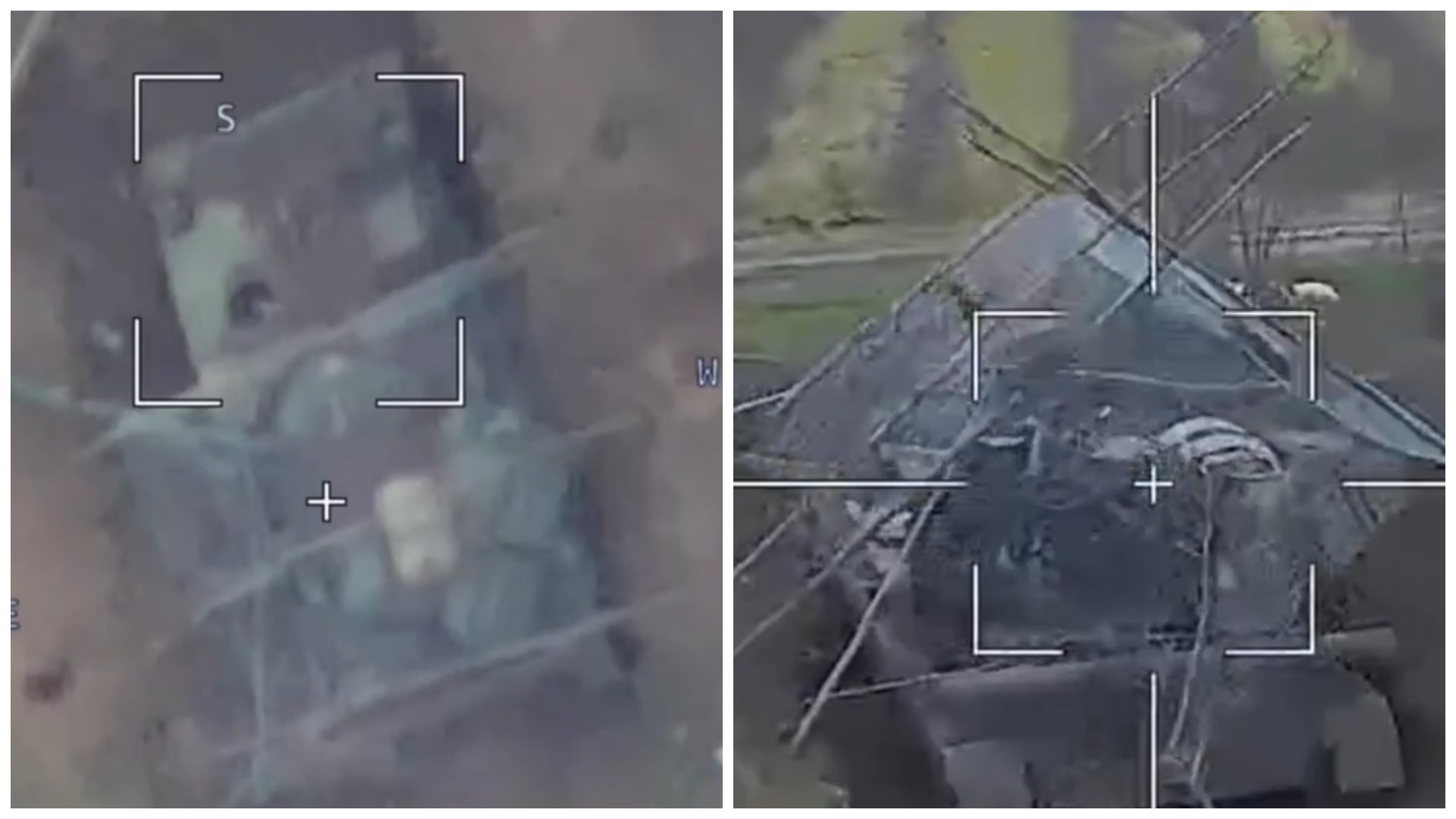
The Russian kamikaze drone failed to neutralize the Ukrainian AHS Krab self-propelled howitzer, which was protected by a conventional net.
The invaders tried to hit the self-propelled howitzer with the modernized Lancet kamikaze drone.
The photos released on social media show that the warhead of the Lancet kamikaze drone went off, but the self-propelled howitzer remained in service.
The Lancet UAV got stuck in a metal net that was placed over the Polish-made AHS Krab self-propelled howitzer.

This modern Russian kamikaze drone has X-shaped wings. The UAV’s warhead weighs one or three kilograms depending on the model.
The Lancet kamikaze drone was first demonstrated in 2019. Its development and production are conducted by ZALA AERO, which is part of the Kalashnikov Group. In December 2022, modernized samples were presented, similar to the UAV that got stuck in the net.

The specifications declared on paper listed a speed of up to 110 km/h, and flight time of up to 30 minutes for the Lancet-1 model and 40 minutes for the Lancet-3 model. The weight of the warhead is 1 kg and 3 kg, and the maximum take-off weight is 5 and 12 kg, respectively.
Ukrainian crews of American M777 howitzers also use special protective nets against the combat drones.
It is worth noting that a metal net can save a combat vehicle only if it is deployed correctly.
Combat actions proved that in some cases, the net does not save howitzers if it does not cover the vehicle from all sides of a possible hit.
Russian kamikaze drones can hit a vehicle not only on the roof of the hull but also from the side or rear.

In the course of the Russian-Ukrainian war, drones modified to drop various explosive substances play an active role. In certain cases, metal nets can protect the upper part of the vehicle from such ammunition.
Підтримати нас можна через:
Приват: 5169 3351 0164 7408 PayPal - [email protected] Стати нашим патроном за лінком ⬇
Subscribe to our newsletter
or on ours Telegram
Thank you!!
You are subscribed to our newsletter